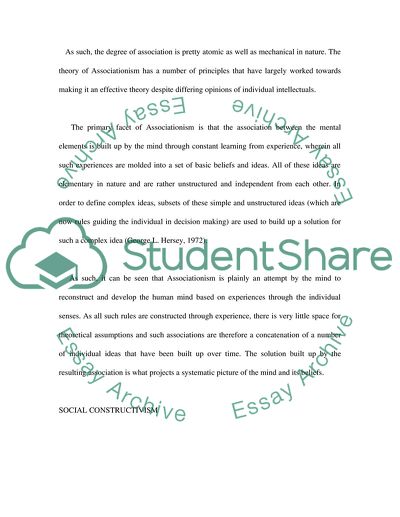Cite this document
(Associationist and Social Constructivist Theories and Their Term Paper, n.d.)
Associationist and Social Constructivist Theories and Their Term Paper. Retrieved from https://studentshare.org/social-science/1542982-compare-and-contrast-the-key-principles-of-associationist-and-social-constructivist-theories-and-their-implications-for-learning-and-teaching-in-the-classroom
Associationist and Social Constructivist Theories and Their Term Paper. Retrieved from https://studentshare.org/social-science/1542982-compare-and-contrast-the-key-principles-of-associationist-and-social-constructivist-theories-and-their-implications-for-learning-and-teaching-in-the-classroom
(Associationist and Social Constructivist Theories and Their Term Paper)
Associationist and Social Constructivist Theories and Their Term Paper. https://studentshare.org/social-science/1542982-compare-and-contrast-the-key-principles-of-associationist-and-social-constructivist-theories-and-their-implications-for-learning-and-teaching-in-the-classroom.
Associationist and Social Constructivist Theories and Their Term Paper. https://studentshare.org/social-science/1542982-compare-and-contrast-the-key-principles-of-associationist-and-social-constructivist-theories-and-their-implications-for-learning-and-teaching-in-the-classroom.
“Associationist and Social Constructivist Theories and Their Term Paper”, n.d. https://studentshare.org/social-science/1542982-compare-and-contrast-the-key-principles-of-associationist-and-social-constructivist-theories-and-their-implications-for-learning-and-teaching-in-the-classroom.


